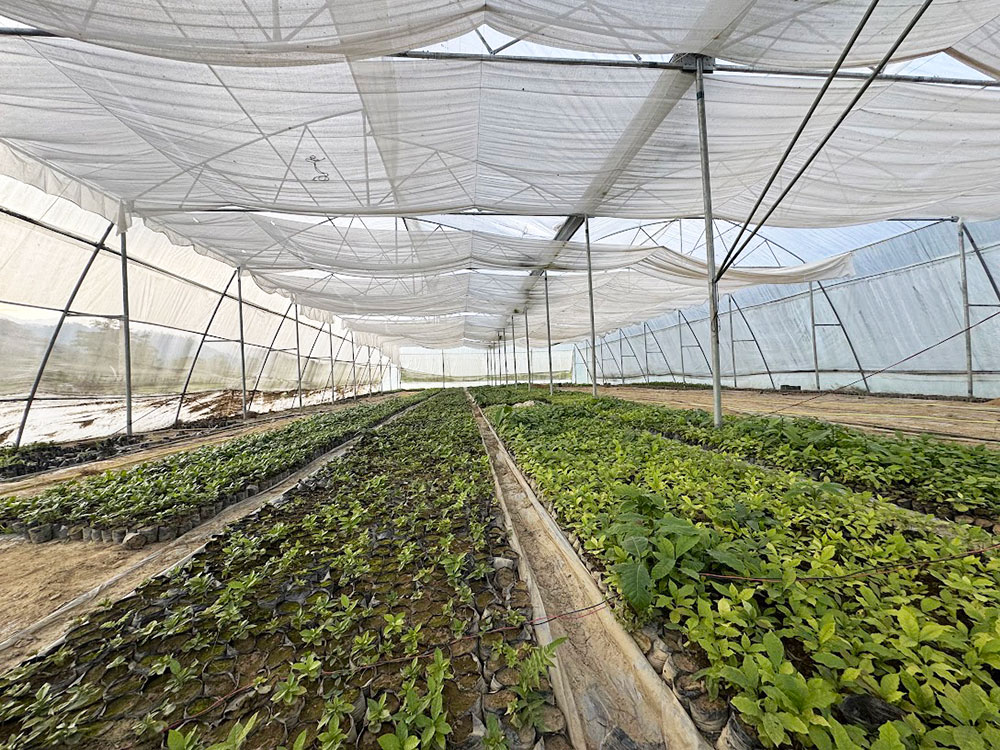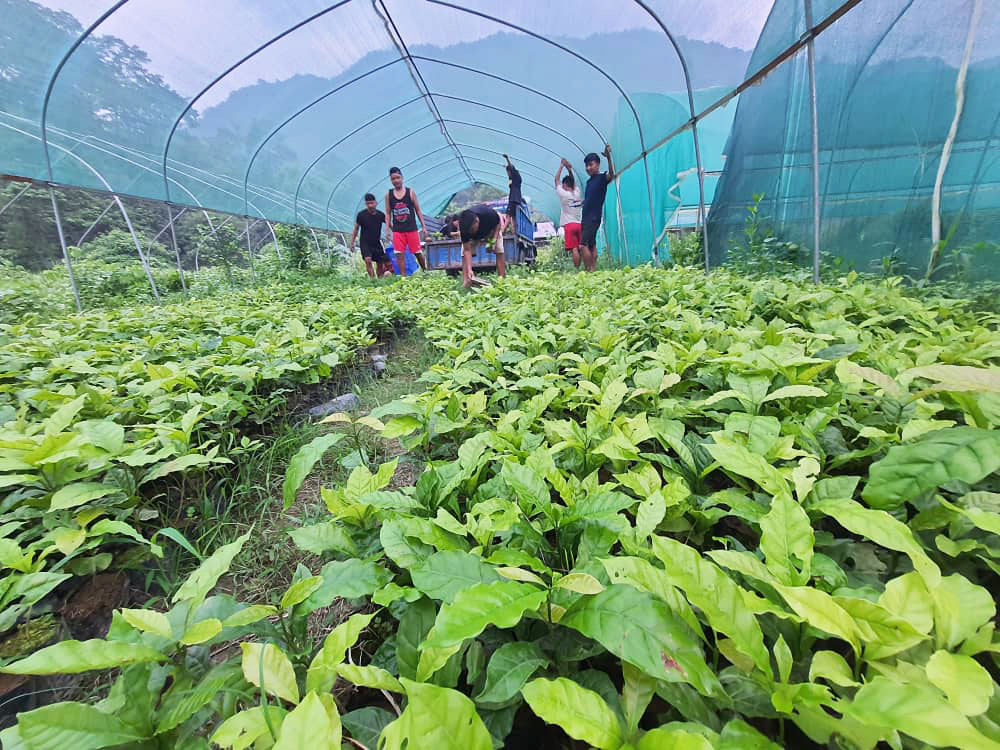More than 85,000 coffee saplings distributed in six gewogs
Lhakpa Quendren
Panbang, Zhemgang— Leki Chedup, a 32-year-old farmer from Panbang in Zhemgang, is betting on an unlikely crop—coffee.
He has ventured into commercial coffee farming with 1,000 Arabica coffee trees now planted on his one acre of land that was once left fallow for years due to wildlife predation.
Given that coffee plantations provide a sustainable farming alternative, which is less susceptible to wildlife damage, he is optimistic about its potential to transform the region.
“Farming is costly, with minimal returns due to human-wildlife conflicts, pest management issues, and unpredictable weather,” Leki Chedup explained. “But coffee plantation can promote harmony between humans and wildlife.”
Leki Chedup leads the Panbang Youth Cooperative (PYC), an agricultural group, that has leased 14 acres of government land in Andala, Ngangla gewog. The Cooperative has planted 600 coffee trees intercropped with pineapples.

Arabica and Robusta coffee saplings in a large greenhouse in Panbang
PYC has raised over 150,000 Arabica and Robusta coffee seedlings in a large greenhouse on 24 decimal-land. The project, initiated by the Zhemgang Dzongkhag Administration with support from the IFAD-funded BRECSA project and UNDP Green Climate Fund, aims to promote commercial coffee cultivation.
More than 85,000 coffee saplings were distributed across six Gewogs—Bardho, Bjoka, Goshing, Ngangla, Phangkhar, and Trong. This includes over 50,000 Robusta saplings for low altitudes and 35,000 Arabica saplings for altitudes between 600 and 1,000 metres.
The initial project, which started in July and August, covers 132 acres, although the dzongkhag administration aimed to cover 228.04 acres across seven gewogs, except Shingkhar. The next round of plantation is scheduled for May 2025.
“We will need to fill the mega greenhouse with nurseries for the next phase. The seeds for germination have been collected, and we plan to raise 300,000 saplings this winter,” Leki Chedup said.
Many coffee growers are intercropping with areca nut and fruit trees, while others are reviving fallow land and replacing dying mandarin trees.
Large-scale coffee plantation initiative
Zhemgang is undertaking an ambitious project to cover 1,500 acres with coffee plantations by the end of the 13th Plan. The cooperative farm can produce 300,000 saplings annually, with support from the GEF Small Grants Programme, implemented by UNDP.
The project supports farmers willing to pay 30 percent of the cost of seedlings, which is intended to foster a sense of ownership and contribute to the success of the project.
Zhemgang’s deputy chief agriculture officer, Tashi Phuntsho, said that a “conflict-to-coexist” approach is needed, as coffee is the best option for helping farmers generate income. “These plantation crops are not damaged by wild animals and will help improve forest quality,” he added.
For the long-term success of coffee farming, the dzongkhag administration has identified three coffee businesses in the country, including the prominent Bhutan Mountain Coffee.
The dzongkhag will establish a multistakeholder platform this month for buyers and growers to discuss marketing strategies and set prices.
The Ministry of Agriculture and Livestock has recently identified coffee as one of the key investment commodities in the country.
Tashi Phuntsho said that the import of coffee in the past five years has been increasing, indicating that the local market is growing. “Coffee will help diversify income sources, as it has good export value,” he said.
Challenges and solutions for fallow lands
Human-wildlife conflict, farm labour shortages, absentee landowners, and rural-to-urban migration are major factors contributing to the increasing number of fallow land in Zhemgang.
As of 2019, Zhemgang recorded 5,493 acres of fallow land, including 4,943.5 acres of dry land, with more farmers continuing to abandon their land each year.
Large-scale coffee plantations, along with crops like tea, turmeric, quinoa, and fruits, are being considered to revive fallow land in the dzongkhag.
Under the Million Fruit Tree Programme, 48,784 fruit trees have been planted, and the initiative will continue in the current plan. The Department of Agriculture recorded replacement mortality in 2022, and the mortality survey for the second and third phases is expected to begin soon.
Tashi Phuntsho said that adopting a package approach, including land development, irrigation, chain-link fencing, and support for tea and coffee plantations, which are wildlife and environment-friendly, will encourage the utilisation of fallow land.
“We will focus on identifying markets before production, in collaboration with the Department of Agricultural Marketing and Cooperatives,” he said. “We will adopt a market-led production approach, not a production-led market.”


